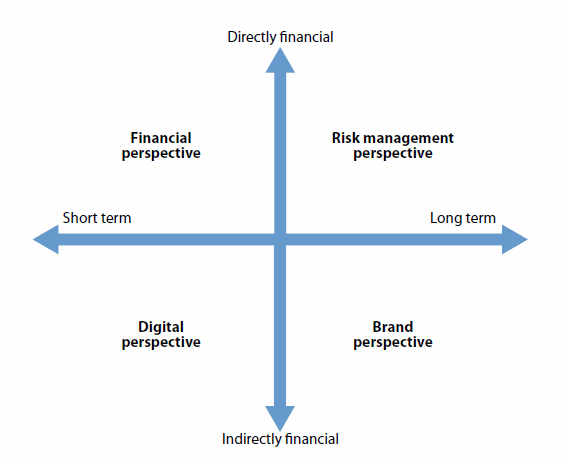SOURCE: Forrester Research Blog “Augie Ray’s Blog”
Brands are making plenty of money in social media: Dell Outlet’s Twitter account has generated millions for Dell, the Intel Channel Voice community has decreased costs by eliminating the need for expensive in-person events and P&G used media mix modeling to demonstrate that the BeingGirl.com community is several times more effective at driving sales than the brands’ television ads.
Many marketers can draw a straight line between investments in social media marketing and financial results, but many more cannot. This doesn’t mean social media marketing is ineffective; it just means that marketers have to recognize benefits beyond dollars and cents. Facebook fans, retweets, site visits, video views, positive ratings and vibrant communities are not financial assets — they aren’t reflected on the balance sheet and can’t be counted on an income statement — but that doesn’t mean they are valueless. Instead, these are leading indicators that the brand is doing something to create value that can lead to financial results in the future.
Traditionally, few brands have wholly evaluated their marketing in directly measurable financial terms, and my new Forrester report recommends a traditional measurement approach for innovative social media marketing programs. Using a Social Media Marketing Balanced Scorecard, marketers can evaluate a diverse set of short- and long-term benefits that are both financial and not. This approach furnishes several benefits, such as aligning measurement to all corporate objectives and not just sales, providing a means for gaining consensus from diverse stakeholders and avoiding short-term gains at the expense of long-term brand health.
An affective Social Media Marketing Balanced Scorecard considers metrics from four different perspectives:
- Financial: Has revenue or profit increased or costs decreased?
- Brand: Have consumer attitudes about the brand improved?
- Risk Management: Is the organization better prepared to note and respond to attacks or problems that affect reputation?
- Digital: Has the company enhanced its owned and earned digital assets?

Marketers who only seek to measure results in one of these perspectives get an incomplete picture and, as a result, are unable to make effective decisions about social media marketing investments. It is only by recognizing all of the benefits delivered by social media marketing that the complete value of these efforts can be understood.
Forrester subscribers can access the new report, The ROI Of Social Media Marketing, for more details, including examples of brands that are measuring their social media marketing in each of these perspectives. I hope many will find this report helpful, and I welcome any and all feedback!

